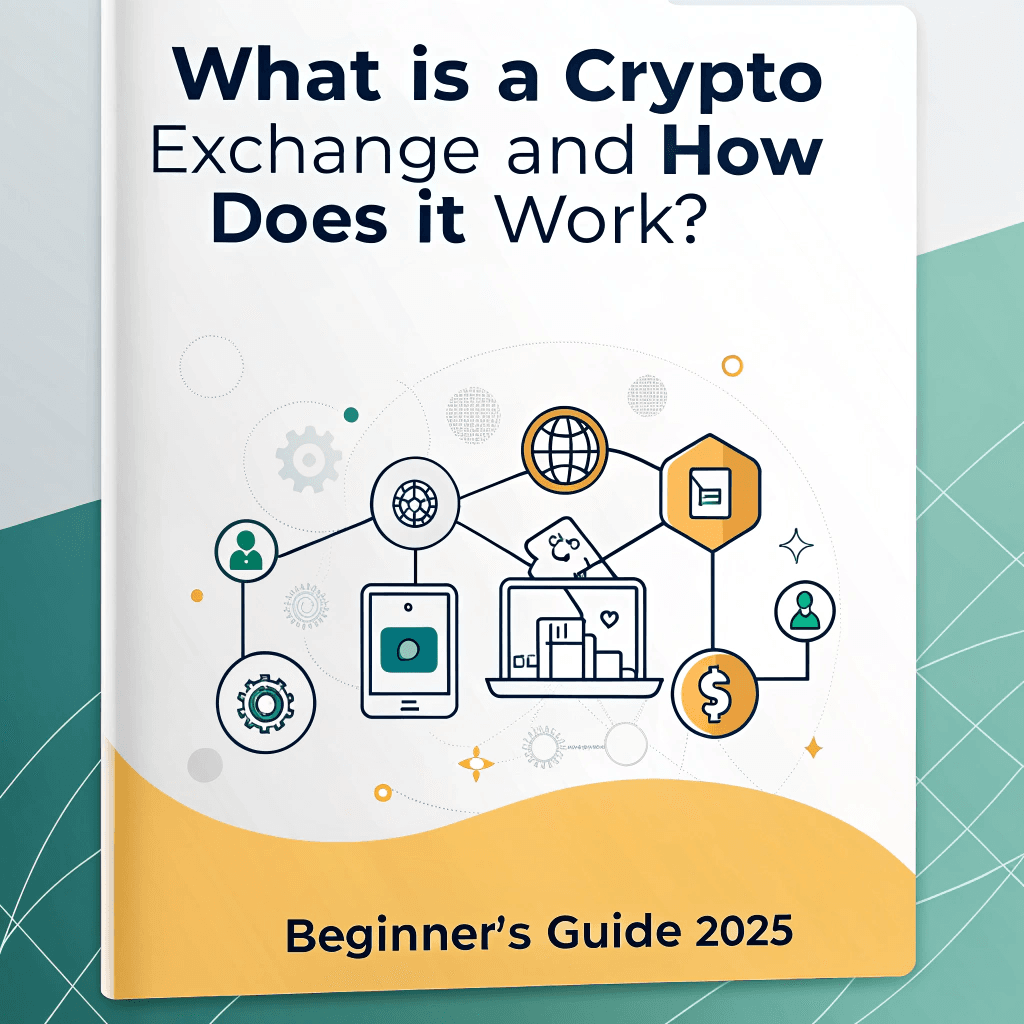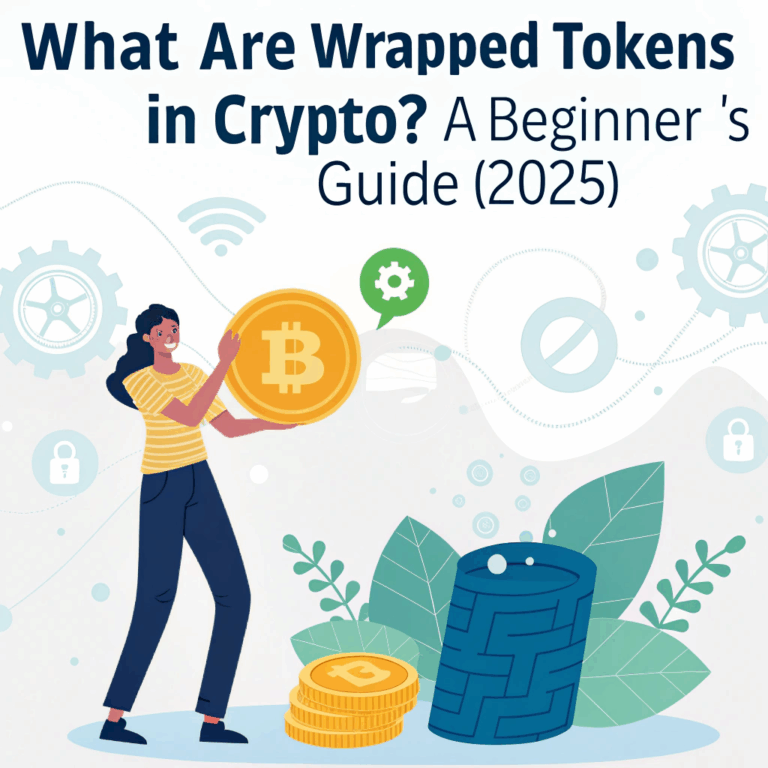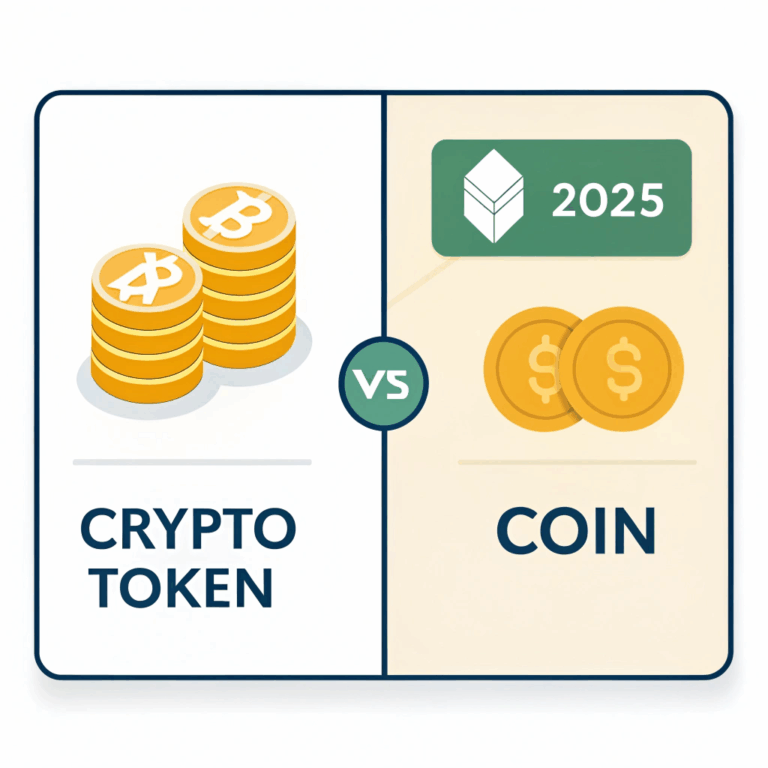What Is a Crypto Exchange and How Does It Work? (2025 Beginner’s Guide)

Introduction
If you’re getting into crypto in 2025, your first step will likely be using a crypto exchange. It’s where you can buy, sell, and trade cryptocurrencies like Bitcoin, Ethereum, and thousands of altcoins. This guide covers what exchanges are, how they work, and how to use them safely.
What Is a Crypto Exchange?
A crypto exchange is a platform that lets users buy, sell, convert, and trade cryptocurrencies.
You can think of it like a stock exchange — but for crypto.
Some exchanges also offer:
- Staking
- NFT trading
- Futures and leverage
- Fiat-to-crypto on-ramps
How Crypto Exchanges Work
Users create accounts, deposit funds (crypto or fiat), and place trades.
The exchange matches buyers and sellers through an order book or automated market maker (AMM), depending on the platform type.
Trades are usually instant, and most platforms allow wallet withdrawals after trading.
Centralized vs. Decentralized Exchanges
| Feature | Centralized Exchange (CEX) | Decentralized Exchange (DEX) |
|---|---|---|
| Ownership | Company holds funds/keys | You hold your own wallet/keys |
| Example | Binance, Coinbase, Bybit | Uniswap, PancakeSwap, Curve |
| User Friendly | High | Medium |
| Speed | Very fast | Slower (blockchain-dependent) |
| KYC Required | Yes (ID verification) | Usually no |
| Control | You trust the platform | Full self-custody |
Popular Crypto Exchanges in 2025
🔹 Centralized
- Binance – Still the largest by volume
- Coinbase – Best for U.S. users and beginners
- Bybit – Trading-focused with leverage and copy trading
- Kraken – High security and fiat support
- OKX – Advanced tools and DeFi integrations
🔹 Decentralized
- Uniswap (Ethereum)
- PancakeSwap (BNB Chain)
- Curve (Stablecoin swaps)
- SushiSwap (Multichain)
- GMX (Perpetual DEX)
How to Use a Crypto Exchange (Step-by-Step)
On a Centralized Exchange:
- Create an account
- Verify your identity (KYC)
- Deposit fiat or crypto
- Choose a trading pair (e.g., BTC/USDT)
- Place an order (market or limit)
- Withdraw to your wallet (recommended)
On a Decentralized Exchange:
- Connect your wallet (e.g., MetaMask)
- Choose a token pair to swap
- Confirm gas fees
- Approve and swap
- Check transaction on blockchain explorer
Trading Pairs and Market Orders
- Trading pairs: e.g., ETH/USDT = exchanging Ethereum for Tether
- Market order: Buy/sell instantly at best available price
- Limit order: Set your own price and wait for a match
- Stop-loss order: Auto-sell at a set loss to manage risk
These tools help users trade more precisely and manage volatility.
Fees, Spreads, and Limits
- Trading fee: 0.1%–0.5% per trade on most CEXs
- Withdrawal fee: Varies by coin
- Spread: Difference between buy/sell price (wider = worse)
- Slippage: Price change between order placed and executed (common on DEXs)
Always check fee structure before choosing an exchange.
How to Stay Safe on Exchanges
✅ Use 2FA (two-factor authentication)
✅ Withdraw funds after trading — not your keys, not your coins
✅ Be cautious of phishing sites and fake apps
✅ Avoid keeping large amounts on exchanges long-term
✅ Only use well-known, regulated platforms
Do You Really Own Your Crypto on Exchanges?
❌ No. On CEXs, the platform controls your private keys
✅ Yes. On DEXs, you control the keys via your wallet
That’s why many users trade on exchanges, then withdraw to self-custody wallets.
FAQ
Can I use a crypto exchange without ID?
Yes — on DEXs. CEXs require ID for full access.
What’s the safest crypto exchange?
Kraken, Coinbase, and Binance have strong track records — but self-custody is safer.
How do I avoid high fees?
Use limit orders, trade on low-fee platforms, or switch to DEXs/L2s.
Can I buy crypto with a credit card?
Yes — most CEXs support credit/debit card payments.
Conclusion
Crypto exchanges are your gateway to the blockchain economy — but not all are the same. In 2025, you have more options than ever: centralized for convenience, decentralized for control. Understand the pros, cons, and tools of each — and always protect your funds.





